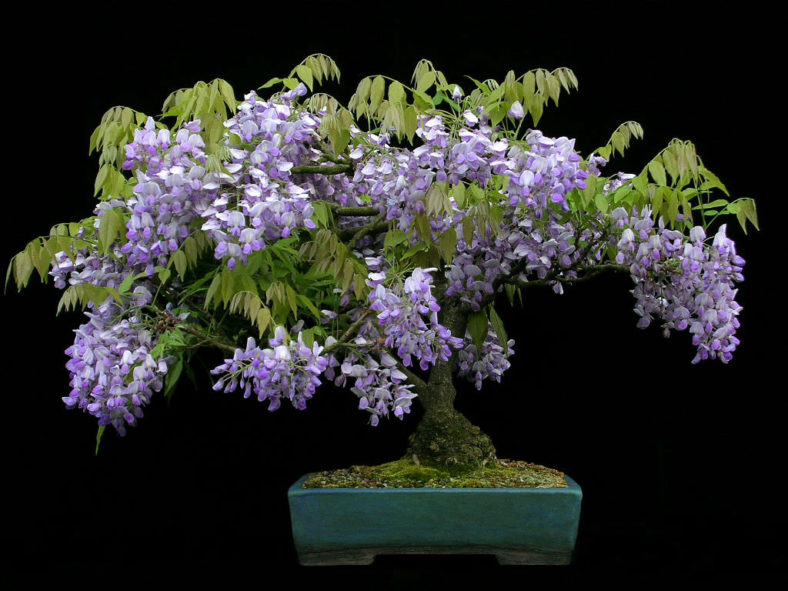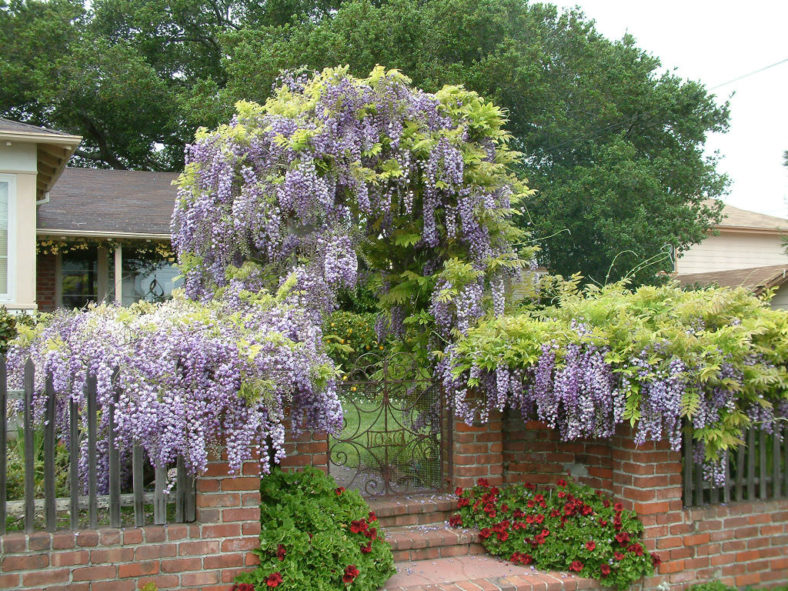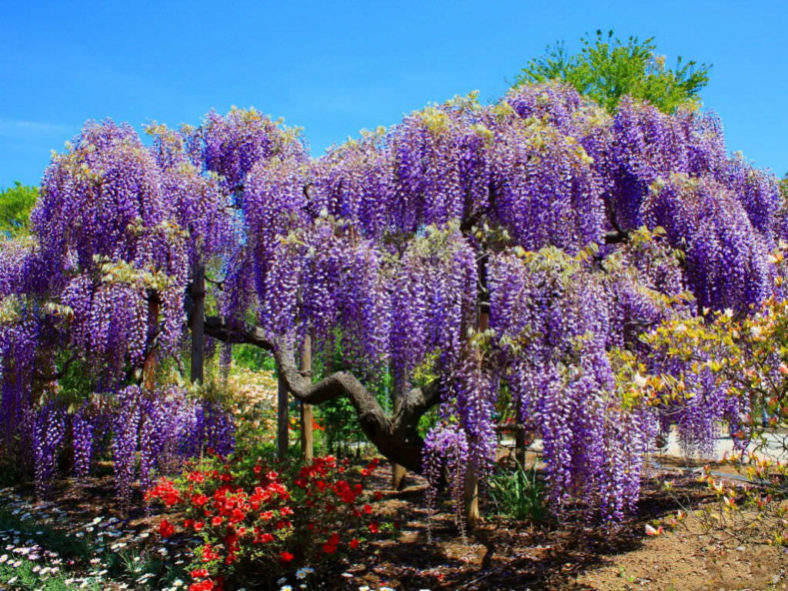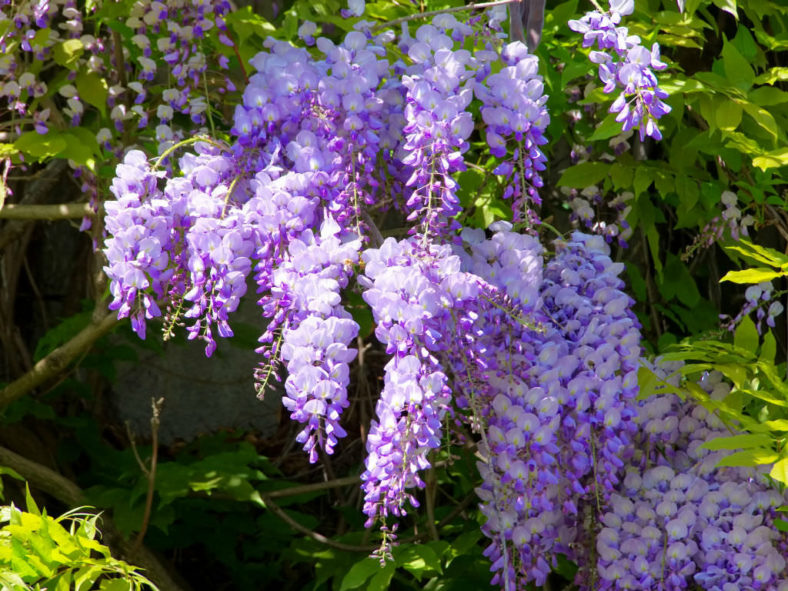Scientific Name
Wisteria sinensis (Sims) Sweet
Common Name(s)
Chinese Wisteria, Chinese Kidney Bean
Synonyms
Glycine sinensis, Millettia chinensis, Rehsonia sinensis, Wistaria sinensis, Wisteria chinensis, Wisteria praecox
Scientific Classification
Family: Fabaceae
Subfamily: Faboideae
Tribe: Millettieae
Genus: Wisteria
Flower
Color: Lavender to purple
Bloom Time: Spring
Description
Wisteria sinensis is a woody deciduous perennial climbing vine that grows up to 100 feet (30 m) long over supporting trees by counterclockwise-twining stems. Leaves are shiny green, pinnately compound, up to 12 inches (30 cm) long, with 9 to 13 oblong leaflets, each up to 2.4 inches (6 cm) long.
The flowers are lavender to purple, produced on up to 8 inches (20 cm) racemes before the leaves emerge in spring. They on each raceme open simultaneously before the foliage has expanded. The flowers have a distinctive fragrance similar to that of grapes. The fruit is a flattened, brown, velvety, bean-like, up to 4 inches (10 cm) long pod with thick, disk-like seeds up to 0.4 inches (1 cm) in diameter spaced evenly inside.

Hardiness
USDA hardiness zone 5a to 10a from −20 °F (−28.9 °C) to 35 °F (+1.7 °C).
How to Grow and Care
The most important factor to consider when growing Wisteria is location. Wisteria is a twining vine that requires sturdy support and regular pruning to keep it under control. Open areas surrounded by a lawn that can be easily mowed are ideal for growing Wisteria.
Wisteria doesn't fair well in the cold, so ensure it receives plenty of sunlight. This vine requires deep, fertile soil that is somewhat moist but will tolerate many soil conditions.
Once planted, pruning is the only important requirement for Wisteria vine care. Since this vine is an aggressive grower, there's no need for fertilizing, and being drought tolerant, Wisteria requires little watering.
While Wisteria is great for covering an arbor or pergola, training Wisteria vines makes it easier to control. Keep in mind, however, when training Wisteria vines, the variety may exhibit different twining characteristics. For example, Chinese Wisteria (Wisteria sinensis) twines counterclockwise, while the Japanese variety (Wisteria floribunda) is the opposite, twining clockwise.
See more at How to Grow and Care for Wisteria.
Origin
Wisteria sinensis is native to China in Guangxi, Guizhou, Hebei, Henan, Hubei, Shaanxi, and Yunnan.
Cultivars
Links
- Back to genus Wisteria
- Plantpedia: Browse flowering plants by Scientific Name, Common Name, Genus, Family, USDA Hardiness Zone, or Origin
Photo Gallery
Click on a photo to see a larger version.




